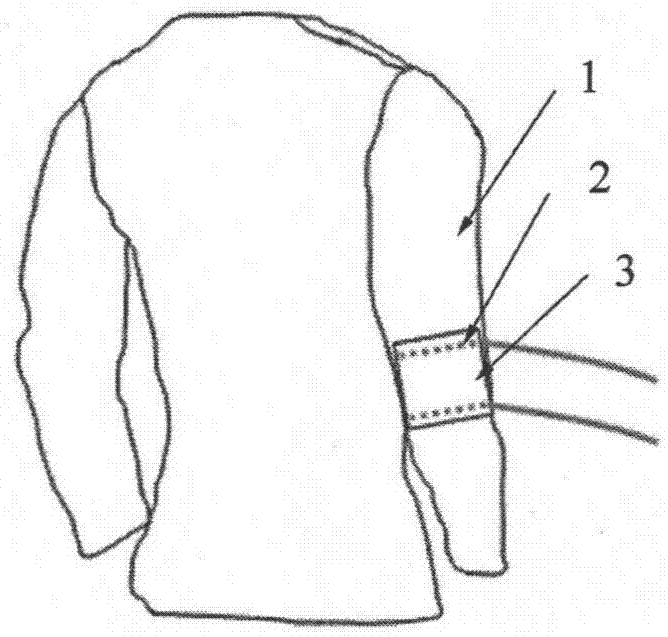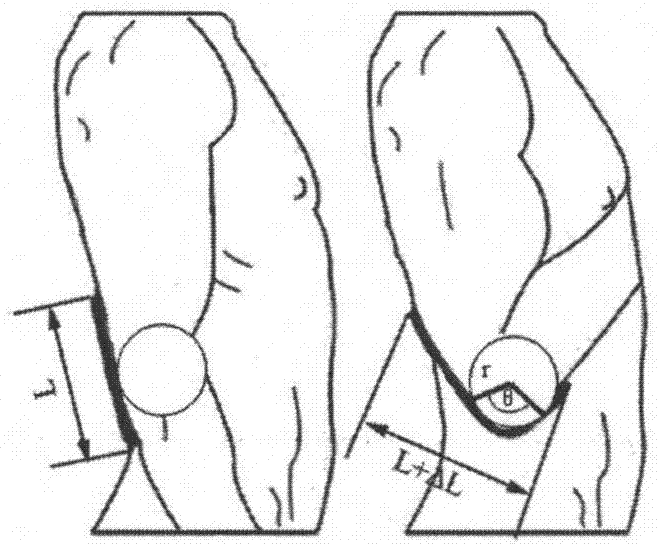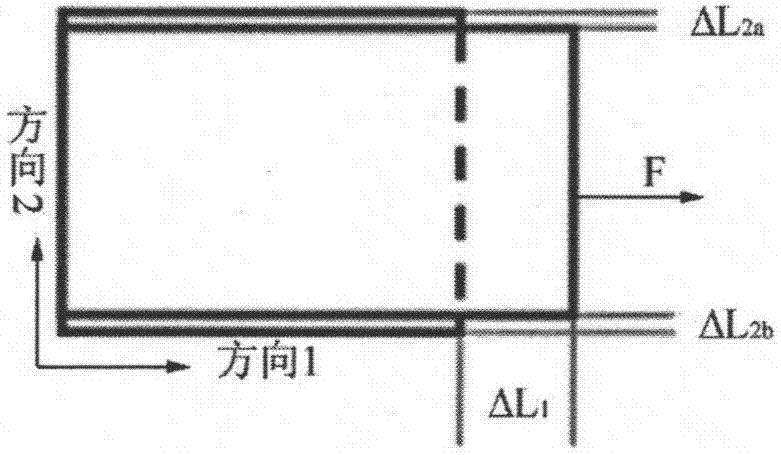A fabric sensor-based upper limb functional movement monitoring system and method
A textile sensor and motion monitoring technology, applied in the fields of sensors, diagnostic recording/measurement, medical science, etc., can solve problems such as flexibility, concealment, comfort, inability to truly reflect the process of limb movement, and falling off, which do not meet the real-time monitoring mode , to achieve the effect of wearing comfort and concealment, low production cost, and enhanced stability
- Summary
- Abstract
- Description
- Claims
- Application Information
AI Technical Summary
Problems solved by technology
Method used
Image
Examples
Embodiment 1
[0049] Responses of fabric resistance to quasi-static bending of limbs at different angles.
[0050] When the arm is naturally drooping, the bending angle is 0°, and the bending angle of the upper limbs is incremented or decremented by 20°, first increasing from 0° to 120°, testing for 5 cycles, and calculating the resistance corresponding to each angle under 5 cycles average value. The angle-resistance equation is obtained by linear fitting, such as Figure 5 Shown, where the sum of squared differences (R 2 ) is equal to 0.95, which shows that the linearity of the fabric resistance response at different angles is good.
Embodiment 2
[0052] The upper limbs do cyclic bending movements at different speeds, and the Bluetooth data acquisition card continuously collects the voltage changes at both ends of the conductive fabric. The movement of upper limbs is reflected by the change of voltage. Such as Image 6 As shown, the arm bends at three different speeds, from Image 6 (a)~ Image 6 (c) The bending speed increases sequentially. from Image 6 It can be seen that as the arm bends the voltage across the fabric decreases and the arm straightens the voltage increases. At the same time, when the speed increases, the number of waveforms in the same time increases. This shows that such a test system can not only reflect the trend of upper limb bending movement, but also reflect the speed of movement through the number of waveforms per unit time.
Embodiment 3
[0054] The upper limbs do intermittent bending exercises. The upper limbs first do a few circular bending exercises, then the arms are in a natural drooping state for a period of time, and then continue to do circular bending exercises. from Figure 7 It can be seen from the figure that the voltage signal generates a waveform when the arm is bent; Figure 7 P in the middle means that when the arm is still, the voltage signal is almost in a straight line without any change. This shows that the test method can reflect the movement state of the limbs.
PUM
 Login to View More
Login to View More Abstract
Description
Claims
Application Information
 Login to View More
Login to View More - Generate Ideas
- Intellectual Property
- Life Sciences
- Materials
- Tech Scout
- Unparalleled Data Quality
- Higher Quality Content
- 60% Fewer Hallucinations
Browse by: Latest US Patents, China's latest patents, Technical Efficacy Thesaurus, Application Domain, Technology Topic, Popular Technical Reports.
© 2025 PatSnap. All rights reserved.Legal|Privacy policy|Modern Slavery Act Transparency Statement|Sitemap|About US| Contact US: help@patsnap.com



